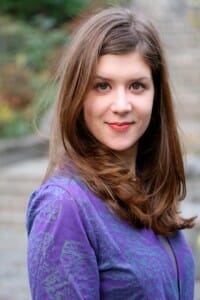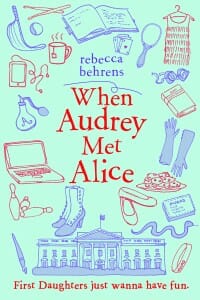
Recently, I have broadened my interests by exploring children’s historical fiction. Much to my delight, I am thrilled to see how some authors weave together historical facts with their creativity. As a lover of history, I am left wondering where the line is drawn between what actually happened and what is part of the author’s imagination. Rebecca Behren’s debut novel, When Audrey Met Alice, made my curiosity soar. Did Alice Roosevelt write a diary? Was the character in When Audrey Met Alice more or less daring than the real Alice? Youth historical fiction can take adults and children into unchartered territory. I’m enjoying the ride.
Rebecca exposes middle level readers to President Roosevelt’s (1858–1919) spunky daughter and life in the White House while simultaneously writing about a fictionalized modern First Kid’s travails. Comparisons between life at the turn of the 20th century and now are striking. If you are interested in learning why Rebecca chose to create such a remarkable tale and some of her writing secrets, take a few minutes and read my interview.
In exchange for an honest review, I received a complimentary copy of When Audrey Met Alice.
Welcome Rebecca.
According to your website bio, you studied a variety of subjects (pre-med, Spanish, psychology, and comparative literature) and worked at numerous types of jobs (pet-sitter, baby-watcher, clothes-folder, shoe-seller, custard-scooper, photo-developer, ticket-seller, book-stocker, restaurant-hoster and paralegal.) Did any of these unrelated writing experiences help you to write your first book?
Studying literature and psychology has definitely helped me become a writer! My early work experiences didn’t directly influence my first book, but I do think they have shaped me as a writer. Particularly in some of the retail jobs I had as a teen and college student, I met and observed a lot of interesting people with backgrounds different than my own.
After completing college, you started editing a variety of publications. Has your editing experiences affected your writing style?
I don’t think my editorial work has had much affect on my writing voice, despite some early attempts to cultivate a different one. Voice can be sort of like a fingerprint—every writer has a unique one and it’s not easy to change. But working as an editor has really sharpened my attention to style and grammar. I pay a lot of attention to writing at the sentence-level; sometimes I spend way too much time puzzling over a specific word choice or sentence construction. It’s hard not to when that’s the cornerstone of your day job!
As an editor and a lover of books, you have been exposed to many different genres? Why did you choose to write your first book for middle level readers?
It was as a middle-grade reader that I truly fell in love with books. I love writing for that age level—when kids are beginning to learn more about themselves and the world, but are still filled with a sense of wonder. It’s the age of discovery, and it leads to so many rich and interesting stories.
Writing historical fiction usually requires a significant amount of preliminary research. What prompted you to direct your focus to Alice Roosevelt and other children who resided in the White House as well life in the White House? Why did you choose to create a fictional diary for Alice and make it a focal point throughout the story?
I always thought Alice Roosevelt was a fascinating historical figure, and I thought she would make a complex and entertaining character. And since childhood, I was very interested in the idea of kids living in the White House.
I really wanted to show the interaction between a contemporary and historical first daughter—but I knew that I didn’t want to write a time-travel or a ghost story. A diary seemed like a great way to create a relationship between those two characters (even if it’s one-sided).
Authors who write historical fiction can take the liberty of interspersing fact and fiction. How did you decide where to draw the line between history and creative ideas?
I wanted this book to be as factually accurate as possible—but I also wanted to tell a great story. If I ever had to choose between good fiction and historical fact, fiction typically won. (Which makes sense, as I’m a writer and not a historian!) But in the cases where I changed or created information, I tried to stay within the realm of plausibility.
Teachers are frequently looking for books that align with State Common Core Standards. What type of resources have you created for the educators, the classroom, and parents?
With my educator sister’s help, I’ve created a CCSS-aligned Educator’s Discussion Guide, a Women’s History Month lesson plan. Those plus an annotated version of Alice’s diary are available on my website: www.rebeccabehrens.com/resources.
Both Alice and Audrey are memorable characters that exhibit bold and spirited behaviors. Are you intentionally sending a message to the girls who will be reading this book?
I hope so! While writing, I generally don’t focus on a specific theme or message—I’m too caught up in trying to tell a good story with engaging characters. But what attracted me to Alice Roosevelt—and led to my creating Audrey—is the way she lived life with boldness and enthusiasm. The phrase “eat up the world,” which the real Alice really used, runs throughout the book. I hope that girls will be inspired to think about what “eating up the world” means to them—like Audrey does in the book.
A portion of my audience may be interested in writing their first children’s book. Can you share 3 tools that you incorporate to keep your readers engaged from the first page to the last page?
Sure! 1) Almost always, even serious settings and topics can incorporate a touch of lightness. Humor is a great tool for engaging young readers. 2) Use all of the five senses. Make sure to tell readers not just what they would see in a scene, but what they would smell, feel, hear, and taste. 3) It’s amazing how different words sound when you speak them instead of read them. Especially when writing dialogue, make sure to read aloud.
What was the greatest challenge that you have faced as a first time children’s author?
Patience! And its related challenge, determination. I think it’s safe to say that almost all writers experience periods of frustration and rejection. After hearing “no,” it can be hard to dust yourself off and keep working. I kept reminding myself that writing for publication is a marathon, not a sprint. And that is true even after a book deal—it will usually take at least a year after selling a book to a traditional publisher for it to finally be in print.
Have you started your next book? If so, can you provide any information or a projected publication date?
I am working hard on my next project, another middle-grade book that blends contemporary and historical fiction. Because it’s in the early stages, that’s all I can share for now!
Rebecca, is there anything else that you would like to share with my audience?
If you are interested in writing for young readers, the Society for Children’s Book Writers and Illustrators (SCBWI) is a great place to start! www.scbwi.org.
Related Blogs:
Q & A with Ruth Tenzer Feldman
Q & A With Laura DeBruce, Author of The Riddle of Prague
Q & A With Frank Nappi, Mickey Tussler Series
Page Turning Time Traveling Adventure
Time Traveling Back to the Dreyfus Affair
Sandra’s Bio

Leave a Reply
You must be logged in to post a comment.